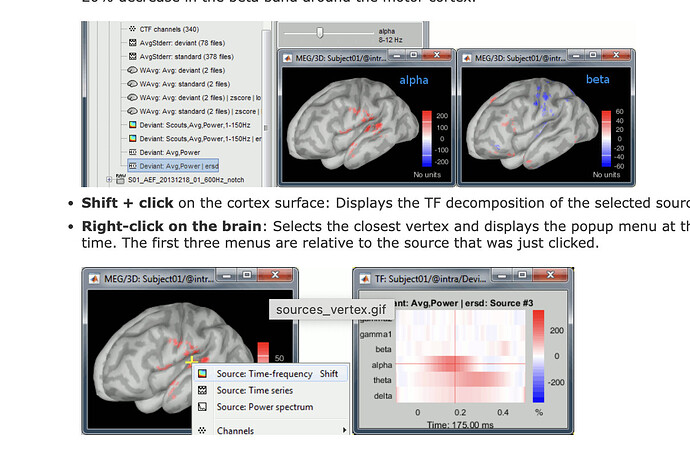Dear BS community,
I am using BS for source localization for EEG data. I am learning how to do this based on the amazing documentation available but I would like to get confidence in the pipeline I am following and ask the experts in case I am doing any mistake in the process.
Description of the dataset:
EEG data collected from 33 subjects, where we had three motor imagery conditions. Each subject performed N trials of motor imagery for each of the conditions, each lasting three seconds. We had a cue for participant to start the motor imagery at every trial, however, we cannot 100% guarantee that they immediately started, so we cannot claim that the trials are 100% time-locked.
For this reason, and for another reason that motor imagery is generally characterized by mu/beta oscillation, we are interested in time-frequency analysis.
Below is the pipeline I am following:
MAIN PIPELINE:
For each condition:
- Estimate the source for each trial using MNE (output is in pA.m)
- Average sources, as is, within subject (output in pA.m)
- Perform z-score normalization with respect to baseline, before the motor imagery trial, for the averaged source.
- Take the absolute value of the normalized source.
- Average the rectified sources across all subjects.
- Visualize brain maps across time (say, 6 brain maps for the 3 seconds)
[Question1: Is step 4 in the appropriate order? Should it be done earlier?]
[Question 2: How would the above pipeline change if I am using dSPM? I am assuming point 3) will be skipped?]
[Question 3: I read that I need to multiply by sqrt(n) when visualizing z-score normalized results. I am assuming this is irrelevant when it comes to performing any stat test, further averaging/processing, etc?]
From those visualization, we are able to confirm our scouts/ROI. This selection can also be reinforced by sensor level time-frequency analysis.
SCOUTS:
For each scout:
- Extract the time series of source activity. This is extracted for each subject from step 4) above (after rectification).
- Conduct statistical analysis on the time series across the conditions. The average time-series across subjects can also be plotted.
TIME-FREQUENCY ANALYSIS:
For each condition and for each SCOUT:
- From the main pipeline, use the output of 1) to estimate TF for each trial.
- Average TF maps within a subject.
- Perform normalization for the averaged map using ERD/ERS method.
- Average maps across subjects.
- Plot the average time-frequency map.
I would very much appreciate your feedback on this. Please let me know if you find any issue or mistake in the above pipeline.
